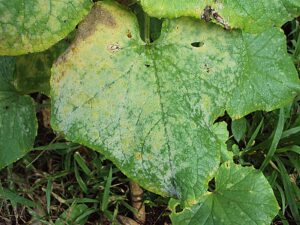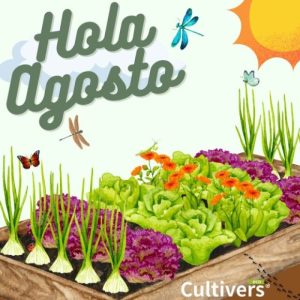Bell pepper Cultivation Guide Pepper belongs to the Solanaceae family as does the tomato. Therefore, it is a crop that requires high temperatures. That is, it is a summer crop and if you want to grow it in autumn or winter you have to have a greenhouse.
As for its cultivation, it needs abundant irrigation and direct sunlight, as well as specific nutritional care. It is not the best crop to start in the world of gardening. However, we are going to list the fundamental steps for its cultivation and the main aspects that you should take into account when you start working with it.
WHEN AND HOW TO SOW
The temperature range for optimum growth is between 15º and 32º Celsius. A little more during the flowering season or when it produces its fruits. We have to take into account humidity ranges above 75%. Since it is a plant prone to fungal attacks.
If you are in an area that is prone to frost or there is a large temperature difference between night and morning, growing peppers will be difficult. Having to wait a little longer to start its cultivation until temperatures are good.

As for how to plant, the first thing we have to do is to prepare the soil where our seeds will germinate, I recommend that you make a mixture of 75% substrate and 25% of our 100% organic worm humus.. With this we will be able to create the perfect balance for our seeds to grow healthy and strong from the beginning.
The next step will be the choice of seed. Everything will depend on the space and consumption needs we have at home. If we like hot peppers, Italian peppers or cuatro canti…
Once we have everything clear and the substrate prepared we put it in the seedbeds. We are ready for bell pepper cultivation. Place at least 2 seeds per hole and moisten the substrate. We can also do direct sowing, but for this we need a climate that accompanies because if we had a frost our plant will die and all our work will have been in vain.
As advice I recommend you to water with warm water and to have the seedbeds in zones with constant temperature, so we will help their germination to be faster.
THE TRANSPLANT
Bell pepper Growing Guide. The ideal is to transplant the bell pepper when the plant already has true leaves. With this we ensure that our plant has already developed roots and the stem is hard enough to support the transplant.
Soil preparation is very important. A good soil will help our plant to grow without problems and will not have deficiencies. Here I advise you to give a good background fertilization with Worm Humus and a little Force Organic. Mix it well and the soil is ready.
Remember to always make a hole larger than the root ball and add a little humus in the hole. We will put the seedling and as a tip I recommend that you do it above the cotyledons. This will give more support to the new plant.
Once it is already planted, as I always say, it is time to give it a good watering. This way our plants will be moist and we will free the soil from possible air pockets.

IRRIGATION
Bell pepper Growing Guide. We water a lot… We water little… One of the questions that perhaps brings us more headaches in the cultivation of tomato… Is it better to water a lot and every few days or to water a little every few days? All this is conditioned by the access to water that we have because if we do not have water network irrigation will not be the same as having.
Our bell pepper plants love watering. They are water-demanding plants, as good solanaceae. They need good doses of sun and frequent watering but without overdoing it. Always try to water the lower part of the plant, without wetting the leaves. Since bell pepper plants are very prone to fungus attacks when humidity exceeds 75%.
From my own experience, if we have mains water, it would be ideal to water at least every 2 days in summer and if the heat is very strong, once a day, always avoiding the hours of highest sunlight incidence, that is to say, either in the early morning or late at night, so that our plants take better advantage of the moisture that we are providing and it does not evaporate so fast that our plants suffer.
On the other hand, in order to retain more humidity in the soil, it would be convenient to mulch our plants. This will save water and prevent our floor from deteriorating.

THE BELL PEPPER AND THE NEED FOR GUIDANCE OR TRELLISING
Bell pepper, like tomato, is a crop that needs to be pruned. They are very productive plants and in the end they support a lot of weight once they are full of fruits. With trellising we will prevent our plants from breaking.
As for how to trellis, there are several ways we can do it. It can be made with reeds, ropes … Any method and any form is effective, as long as it performs the function we are looking for. In this case, it is to keep the plant as strong and well-watered as possible.

PLANT PRUNING
We come to a point with some controversy in our guide to the cultivation of peppers… Here many people have very different opinions…. Whether we can or not… how we do it… I always speak from the experience of years working with this type of plants.
It is true that I usually leave the tomato plant very much to its own devices, pruning only occasionally to reduce the size of the plant. In some varieties more than others. For example, in chili pepper plants I do not touch them, that is to say, I do not prune them at all. Perhaps in Italian peppers or four-cornered peppers if I prune them if I see that the plant is making a lot of stem below the withers. I do this pruning so that the plant does not lose energy in those low shoots, which in the end will not provide food for us. But they do consume energy from our plant.

HOW AND WHEN TO HARVEST PEPPERS
Bell pepper Growing Guide. Peppers normally start to produce around 3-4 months after planting. This also differs greatly depending on the variety we have. Here we also have another point of discussion
Peppers do not need to be harvested when ripe. The more color it gets, the riper and sweeter it will be in the case of Italian or baked peppers. But this does not mean that it is necessary to do so. If it is to be consumed at home, once the bell pepper has a size that interests us, it can be consumed without problems.
Remember that there are a multitude of colors, so often we should not be guided by color. There are green, yellow, red, orange, orange, black peppers…
As for the way to harvest, it is very simple. The bell pepper plant is a very weak plant, if we are not careful we will break the branch if we do not cut the fruit properly. I advise you to use a pair of scissors to avoid this. This way we will avoid branch breakage and fruit loss.

COMMON DISEASES AND PESTS
I NSECTS ON BELL PEPPER CULTIVATION
- Spider mite (Tetranychus spp.) The spider mite sucks up plant material by absorbing cellular juices as part of its diet. The affected tissue becomes yellowish in color and necroses over time. In advanced infestations, a characteristic spider web is generated around the entire plant.
- The green bug (Nezara viridula) is a phytophagous hemiptera, i.e. it feeds on plant sap. Since it feeds on plants, it is very common in all types of crops.
- Whitefly (Bemisia tabaci) The female whitefly lays her eggs on the underside of bell pepper leaves. Spheres of white color are visible to the eye. To feed, they suck the plant, weakening it and eventually causing general wilting.
- Leafminer ( Liriomyza spp.) The galleries formed by this pest can be distinguished with the naked eye on the upper side of the leaf. The adult is 2 mm in size, black and yellow in color and has light-colored wings. Damage to the bell pepper plant is caused by the adult biting the leaf to lay eggs or to feed. The galleries that form become necrotic over time, weakening the plant.
- Thrips (Frankliniella occidentalis) Thrips are elongated insects measuring about 1- 2 mm (visible to the naked eye and recognizable with a magnifying glass) and are brown in color. These insects suck plant material from the tomato plant. The area where they have been sucked has a silvery coloration and eventually necroses.

DISEASES IN THE BELL PEPPER CROP.
- Downy mildew (Phytophthora infestans) This fungal disease attacks the aerial part of the plant in conditions of high humidity (90%). Detection of the presence of the fungus is due to the appearance of irregular spots that eventually necrotize on the leaves. Brown spots appear on the stem and irregularly shaped brown spots appear on the fruit.
- Oidium (Leveillula taurica) This fungus manifests itself on the bell pepper plant with a whitish mycelium that can be seen with the naked eye. The germination temperature of the fungus fluctuates between 10 ºC and 35 ºC, with temperatures below 30 ºC being optimal.
- Gray rot (Botrytis cinerea) Brown spots (grayish powder), which is the gray mycelium of the fungus, are produced on leaves, stems and flowers. A soft – watery rot is produced in the fruits.

PRODUCTS WE RECOMMEND FOR THIS CROP

